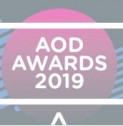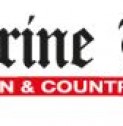Funders
Collaborators
Chief Investigators:
- Ms Donna Stephens
- Ms Sarah Clifford
- Mr Richard Mellor
- Dr Katinka van de Ven
- Professor Alison Ritter
- Professor James Smith
- Professor Peter d’Abbs
- Dr Matthew Stevens
- Ms Danielle Dyall
- Mr Benjamin Christie
-

ABC Darwin Mornings | Sarah Clifford on the History of alcohol laws in the Northern Territory
Menzies PhD student Sarah Clifford on her study of the history of liquor laws in the Northern Territory and alcohol policy.
-
Sunday Territorian - Bushranger
Mention of Menzies Tuesday Seminar
-

Sunday Territorian | Liquor watches drunk on power
Sunday Soapbox opinion piece - Hayley Sorensen - mentions Menzies research on the costs and harms of alcohol consumption in the Northern Territory
-
MENZIES SCHOOL OF HEALTH RESEARCH RECOGNISED WITH NATIONAL AWARD
Menzies School of Health Research, has won the Research Award at the 2019 National Alcohol and Other Drugs Excellence and Innovation Awards in Melbourne.
-

CENTRALIAN ADVOCATE | Grog rehab bed shortage
Professor James Smith from the Menzies School of Health Research said investing more in brief interventions would save a great deal of money.
-

NT News | NT Rehab beds short
There is a significant unmet demand for alcohol -related treatment in the Territory a new study has found.
-
One in every 33 people in Northern Territory seeks treatment for alcohol problems
Menzies researcher Professor James Smith, said the study highlighted a gap between met and unmet demands for treatment services.
-
Thousands of Territorians are accessing alcohol treatment
Researchers have found there were 42,871 episodes/encounters for alcohol treatment in NT in 2016/17.
-
Demand Study for Alcohol Treatment Services in the NT
The study was jointly led by Menzies and the University of New South Wales, in partnership with the Aboriginal Medical Services Alliance of the NT (AMSANT).
Aims:
- To clearly define what is meant by alcohol treatment services in the NT.
- To identify, quantify and describe met and unmet demand for alcohol treatment services in the NT.
- To identify the main pathways into treatment for people in the NT.
- To assess the impact of treatment referrals from the criminal justice system on demand for and accessibility of treatment services for self-referrals and other voluntary referrals.
- To assess the impact of remoteness and dispersed settlement patterns on treatment accessibility in the NT.
- To identify the challenges, opportunities and potential solutions associated with planning, delivering and evaluating effective and economically viable, and contextually and culturally responsive, alcohol treatment services in the NT.
- To inform the development of an alcohol treatment services plan.
Research Questions:
- What is the met and unmet demand for alcohol treatment services in the Northern Territory?
Summary:
- This is a mixed-methods research project examining the current NT alcohol treatment services system. It provides an assessment of how much treatment is currently provided; how much should be provided to meet current demand; and the challenges, barriers and opportunities associated with the planning and delivery of alcohol treatment services in the NT.
- The project is modelled on two recent national demand studies. The first involved a review of treatment service systems across Australia (Ritter et al., 2014). The second involved a qualitative analysis of treatment services involving Aboriginal and Torres Strait Islander people (Gray et al., 2014). The research design has been adapted to meet the unique population distribution, geography and service delivery context of the NT.
- The quantitative component collates 2015/2016 administrative data regarding the use of alcohol treatment services across the NT (the met demand), and compares it to the Drug and Alcohol Services Planning Model (DASPM) predicted usage, to estimate the gap (the unmet demand).
- The qualitative component provides a descriptive account of key stakeholder viewpoints from across the alcohol treatment services system. This includes a discussion about alcohol treatment types; pathways into treatment; intersections with treatment referrals from the criminal justice system; and implications of remoteness on treatment accessibility in the NT.
Implications for policy and practice:
- The experience of service providers suggests that RRS are being used as a means to secure temporary housing and accommodation for clients (particularly those clients exiting detention or seeking refuge from DFSV), rather than the primary focus of providing intensive treatment and therapeutic support. An increased investment in associated social services, particulary housing, is required to complement community based treatment. Supported accomodation is a model worth further investigation.
- The establishment of a more robust alcohol treatment service response within (rather than external to) the corrections systems is warranted. This is particularly important for sex and serious violent offenders, where there is a clear service gap.
- More cost-effective alternatives to RRS should be promoted within the child protection system, particularly in instances where child-parent reunification is the aim.
- Integrated approaches between health, housing, and justice systems to support clients entering and exiting alcohol treatment services are important. There are some examples of intensive throughcare and case management support being provided, but they are heavily reliant on an appropriate supply of accommodation.
- To allow for more effective coordinated case management and continuation of care, many participants advocated for better systems to share data when referring between agencies.
- The use of technological options, such as tele-health, could be significantly enhanced to meet the needs of remote clients with mild, moderate and severe alcohol-related health concerns.
- Strategies to build local workforce capacity and/or recruit and retain capable staff are important areas for investment.
- Further work is required to promote and track the use of AUDIT-C in primary health care settings, particularly among GPs. This may help to increase referrals between GPs and alcohol treatment services. It will also aid future analyses of alcohol treatment demand.
- Episodes of care by region are difficult to ascertain for ACCHOs through the Online Services Report (OSR). This is a significant limitation for regional health planning across the NT and highlights the importance of reviewing and improving the OSR data system.
Our research has found:
- There were 42,871 episodes/encounters for alcohol treatment in NT in 2016/17, equating to 117 encounters every day across the NT. Aboriginal and Community Controlled Health Organisation (ACCHO) episodes represent the highest number of encounters (41%). The next highest is GP encounters (18%).
- There is currently a relatively small gap between met and unmet demand for alcohol treatment in the NT; approximately 2000 people per year who required treatment are not receiving it (aged between 18-64).
- There is a large unmet demand for screening and brief intervention, in the order of 18,500 to 19,000 people
- There are currently 158 residential rehabilitation beds provided in the NT for people with alcohol disorders. This is 15% below the modelled estimate of 187 residential rehabilitation beds.
- The level of clinical FTE predicted to meet the care as specified in DASPM is well above the current clinical FTE in the NT.
- This suggests that while the numbers of people being treated may be about right, the intensity and the level of care is not configured in a way that might best meet needs, and more treatment is required to respond to mild and moderate needs.
- Community-based treatment options are highly valued, particularly for clients with mild and moderate needs. However, this applies to both urban and remote contexts.
- The intergenerational nature of alcohol-related trauma in the NT, particularly among Aboriginal clients, requires both generalist and specialist skill development across the alcohol treatment services system.
- The vast majority of the ‘specialist’ alcohol treatment (provided by NTG, hospitals and specialist NGOs) is provided in Alice Springs (45%) and Darwin (42%) and transport costs are inadequate to support Fly-in Fly-Out/Drive-in Drive-Out alcohol treatment service delivery to remote and very remote locations.
- Residential rehabilitation is the most common referral pathway used by the criminal justice system, followed by assessments and counselling. Using a three year average, there are 209 closed episodes of residential rehabilitation per year resulting from community-based corrections referrals; and 85 closed episodes of RRS per year resulting from lawyer referrals.
Project Manager
- Ms Donna Stephens
Contact info
Projects dates
- Completed
Publications
Stephens, D., Clifford, S., Mellor, R., van de Ven, K., Ritter, A., Smith, J.A., D’Abbs, P., Stevens, M., Dyall, D. & Christie, B. (2019). Demand Study for Alcohol Treatment Services in the Northern Territory. Darwin, Menzies School of Health Research.






